Everything You Need to Know About teeth whitening gels used by dentists
- Everything You Need to Know About Teeth Whitening Gels Used by Dentists
- Introduction: why dentist-grade whitening gels matter
- What are teeth whitening gels used by dentists?
- Active ingredients: hydrogen peroxide and carbamide peroxide
- How whitening gels work on tooth stains
- In-office vs. dentist-prescribed take-home whitening gels
- Typical concentrations and practical implications
- Professional application: step-by-step overview
- Safety considerations and common side effects
- Who is a good candidate for dentist-grade whitening gels?
- Longevity of results and factors that affect maintenance
- Choosing the right dentist and product
- Regulatory and quality standards to look for
- How manufacturers like Double White support dental practices
- Customization and private-label opportunities for practices and retailers
- Practical aftercare advice for patients
- Common myths and facts about whitening gels
- How to evaluate product claims and clinical evidence
- Why professional oversight improves whitening outcomes
- Conclusion: informed choices lead to better whitening results
- Next steps and how Double White can help your practice
- Frequently Asked Questions
Everything You Need to Know About Teeth Whitening Gels Used by Dentists
Introduction: why dentist-grade whitening gels matter
Teeth whitening gels used by dentists are the professional-strength formulas designed to remove or lighten intrinsic and extrinsic tooth stains safely and predictably. Patients seeking faster, long-lasting results often turn to dentist-administered or dentist-prescribed gels rather than over-the-counter alternatives. This article explains what makes these gels effective, how professionals use them, safety considerations, and why working with a reputable supplier and dental professional matters for optimal results.
What are teeth whitening gels used by dentists?
Dentist-grade teeth whitening gels are peroxide-based bleaching products formulated for clinical or professional take-home use. Unlike retail whitening pastes or strips, these gels typically contain higher concentrations of active bleaching agents and are packaged for application in dental trays or with in-office systems. The purpose-built formulations balance efficacy, viscosity (so they stay in place), and ingredients that reduce irritation and sensitivity.
Active ingredients: hydrogen peroxide and carbamide peroxide
The two primary active ingredients in professional whitening gels are hydrogen peroxide and carbamide peroxide. Hydrogen peroxide acts directly as a bleaching agent. Carbamide peroxide breaks down into hydrogen peroxide and urea, releasing the active peroxide more slowly—this makes it a common choice for dentist-prescribed take-home gels. The choice of active ingredient affects onset speed, strength, and recommended application time.
How whitening gels work on tooth stains
Whitening gels work through an oxidation process. When peroxide molecules break down, they release reactive oxygen species that penetrate the tooth enamel and dentin to oxidize colored organic molecules (stains). This chemical reaction changes the structure of the pigments so they reflect light differently, producing a lighter tooth shade. Because the gel acts on molecules rather than physically removing enamel, proper formulation and controlled exposure are essential to avoid unwanted side effects.
In-office vs. dentist-prescribed take-home whitening gels
In-office whitening usually uses higher-concentration hydrogen peroxide gels applied by the dentist for shorter periods, often combined with protective barriers for gums and sometimes with light or heat to accelerate the process. Take-home dentist-prescribed kits typically use lower concentrations (often carbamide peroxide in custom trays) for longer daily sessions over several days or weeks. Both approaches are effective; the choice depends on patient needs, sensitivity, and desired speed of results.
Typical concentrations and practical implications
Concentration determines how quickly and intensely a gel whitens teeth. In clinical practice, in-office gels commonly use higher peroxide concentrations to achieve rapid results under supervision. Take-home gels use lower concentrations to maintain safety during repeated at-home use. Regulations and recommended concentrations vary by country, and dental professionals tailor concentration and exposure time to each patient’s dental condition and sensitivity profile.
Professional application: step-by-step overview
A typical professional whitening session includes assessment, shade documentation, gum protection, application of whitening gel, monitoring, and post-treatment care. For take-home therapy, the dentist custom-fits trays, prescribes an appropriate gel concentration, provides application instructions, and schedules follow-up. Professional oversight reduces the risk of overuse and helps manage sensitivity or uneven results.
Safety considerations and common side effects
When used as directed by dental professionals, whitening gels are generally safe. The most common side effects are transient tooth sensitivity and temporary gum irritation. Sensitivity usually peaks during or shortly after treatment and often subsides within days. Proper tray fit, controlled gel volume, and professional advice on desensitizing products help minimize these effects. Avoiding over-the-counter misuse or prolonging applications beyond professional recommendations reduces risk.
Who is a good candidate for dentist-grade whitening gels?
Good candidates typically have healthy teeth and gums, realistic expectations, and staining caused by age, consumption of stain-causing foods/drinks, or tobacco. Patients with restorations (crowns, veneers, composite fillings) should discuss expectations because restorations do not whiten the same way natural enamel does. Dentists evaluate oral health and suggest alternative approaches when whitening is not appropriate.
Longevity of results and factors that affect maintenance
Results from dentist-administered whitening can last from several months up to a few years, depending on diet, smoking, oral hygiene, and genetics. Regular touch-ups—either dentist-supervised take-home gels or occasional in-office sessions—help maintain results. Using whitening toothpaste and avoiding frequent consumption of high-stain foods and beverages prolongs the effect.
Choosing the right dentist and product
Select a licensed dentist who offers a thorough consultation, shade documentation, and a written plan that explains concentration, expected outcome, and follow-up. Ask about product sourcing and whether the gels used are from reputable manufacturers with quality control and clinical support. Professional relationships with trusted suppliers ensure consistent product quality and packaging, which is important for both safety and results.
Regulatory and quality standards to look for
Regulations vary by region, but high-quality professional gels come from manufacturers who follow good manufacturing practices (GMP) and comply with local medical device or cosmetic regulations. Dentists should use products backed by stability testing, ingredient transparency, and, where available, clinical data. Choosing manufacturer partners with R&D and strict quality control—like Double White—helps ensure consistent, safe formulations for clinical use.
How manufacturers like Double White support dental practices
Double White is a professional organization focused on oral care R&D and manufacturing, supplying a range of whitening products including strips, gels, and pens. As a leading teeth whitening kit supplier in China, Double White offers free samples, customized packaging, and OEM services. Dental clinics and distributors benefit from working with suppliers that provide customization, reliable batch consistency, and scientific backing for their formulations.
Customization and private-label opportunities for practices and retailers
Dental clinics and retailers seeking branded whitening solutions can partner with manufacturers that offer private-labeling and custom packaging. Customization helps clinics differentiate services and build a consistent patient experience. When choosing a supplier, prioritize companies with strong biotech R&D, clear quality control, and the ability to provide regulatory documentation and sample testing.
Practical aftercare advice for patients
After professional whitening, dentists commonly recommend avoiding dark-colored foods and beverages (coffee, red wine, soy sauce) for at least 48 hours, using a soft-bristled toothbrush, and considering desensitizing toothpaste if sensitivity occurs. Periodic top-up treatments, good oral hygiene, and routine dental cleanings contribute to longer-lasting results. Following the dentist’s directions for tray use and gel amount prevents overuse and gum irritation.
Common myths and facts about whitening gels
Myth: Whitening gels damage enamel permanently. Fact: When used correctly under professional supervision, whitening gels oxidize stains but do not permanently erode enamel. Myth: All whitening products are the same. Fact: Professional gels differ by active ingredient, concentration, viscosity, and clinical support, which affects efficacy and safety. Choosing dentist-prescribed gels ensures appropriate selection and monitoring.
How to evaluate product claims and clinical evidence
Look for products with transparent ingredient lists, stability data, and clinical studies or peer-reviewed literature when available. Reputable manufacturers provide technical data sheets, safety information, and guidance for clinical use. Dentists should verify regulatory compliance and request samples for evaluation before large purchases or private-label commitments.
Why professional oversight improves whitening outcomes
Professional oversight ensures accurate diagnosis, appropriate product choice, safe application, and management of sensitivity or gum issues. Dentists can identify intrinsic stains or restorative considerations that affect whitening success and provide tailored treatment plans. This personalized approach yields more predictable, satisfactory outcomes than unsupervised over-the-counter use.
Conclusion: informed choices lead to better whitening results
Teeth whitening gels used by dentists offer more controlled, effective, and customizable whitening than most consumer products. Understanding active ingredients, application methods, safety considerations, and the role of reputable suppliers helps dental professionals and patients get the best results. Partnering with experienced manufacturers and following professional protocols ensures predictable whitening with minimized risk.
Next steps and how Double White can help your practice
If you are a dental professional or distributor looking for reliable whitening gels and customization options, consider assessing suppliers who offer quality control, scientific R&D support, and OEM/private-label services. Double White provides a range of teeth whitening products, free samples for evaluation, and packaging customization to align with your practice or brand needs. Visit https://www.double-white.com/ to learn more and request samples.
Frequently Asked Questions
Q: What is the main difference between in-office whitening gels and take-home gels?A: In-office gels typically use higher concentrations of peroxide for faster results under professional supervision, while take-home gels use lower concentrations (often carbamide peroxide) for longer, gentler daily treatments in custom trays.
Q: Are dentist-grade whitening gels safe for enamel?A: Yes, when used correctly under dentist supervision, professional whitening gels oxidize stains without permanently damaging enamel. Proper product selection and application are crucial to safety.
Q: How long do results from dentist-administered whitening last?A: Results vary by individual habits and oral care; many patients enjoy noticeably whiter teeth for 6 months to a few years. Touch-ups and good oral hygiene extend longevity.
Q: Do restorations like crowns and veneers whiten with gels?A: No. Porcelain, composite, and other dental restorations do not respond to peroxide whitening the way natural enamel does. Discuss restoration shade planning with your dentist.
Q: What causes tooth sensitivity after whitening and how is it managed?A: Sensitivity is usually due to transient changes in nerve response after peroxide exposure. Dentists manage it with reduced concentration, shorter application times, desensitizing agents, or topical fluoride treatments.
Q: Can I buy professional gels online for home use without a dentist?A: Regulations vary by country; higher-concentration gels are often restricted to dental professionals. Using professional gels without guidance increases risk of irritation and uneven results—consult a dentist.
Q: How should dental practices choose a whitening gel supplier?A: Choose suppliers with robust R&D, transparent quality control, regulatory documentation, sample availability, and private-label capabilities. Look for clinical support and consistent batch quality.
Q: Why choose Double White as a supplier?A: Double White focuses on oral-care R&D and manufacturing, offers free samples and customized packaging, and provides a full suite of whitening products (gels, strips, pens) backed by manufacturing capacity and quality control.
Recommended for you
Do Teeth Whitening Strips Work? | Double White
Do I Brush My Teeth After Using Whitening Strips? - Double White
Is It OK to Leave Whitening Strips On Overnight? | Double White
Risks of Leaving Whitening Strips on Too Long | Double White
About Product Choice
How do I choose the right teeth whitening kit for me?
Our teeth whitening kits include different combinations of products such as patches, pens, and oral rinses. You can choose a package that's right for you based on your personal needs and budget, or ask our sales team for advice.
About Cooperation Process
How to start working with your company?
You can contact us through our official website or contact information, and our sales team will be happy to assist you.
Teeth Whitening Powder
Is the teeth whitening powder safe for sensitive teeth?
Yes, our formula is designed to be gentle on sensitive teeth and gums, ensuring safe and effective whitening.
About Customized Services
Can I develop an exclusive formula and sign an NDA?
Yes, Double White supports developing exclusive formulas to meet customer market differentiation needs
About Recipe Customization
Have your formulas been clinically tested?
Yes, our formula has undergone clinical trials and user testing and proven to have good whitening effects and safety in practical applications.

HP Teeth Whitening Alcohol-free Strips HPNA-01
Discover Double White’s HP Teeth Whitening Alcohol-free Strips HPNA-01, the best teeth whitening strips designed for a brighter smile without irritation. Alcohol-free formula ensures gentle yet effective whitening. Achieve professional results safely and easily at home with these top-rated teeth whitening strips.

HP Teeth Whitening Alcohol-free Strips HPNA-02
Double White’s HP Teeth Whitening Alcohol-free Strips HPNA-02 offer effective, gentle whitening without alcohol. These best whitening teeth strips deliver visible results, making them the good teeth whitening strips choice for a brighter smile. Try our whitening strips for teeth today!

Hydrogen Peroxide Residue Free Teeth Whitening Strips RFHP01
Double White Hydrogen Peroxide Residue Free Teeth Whitening Strips RFHP01 deliver the best quick teeth whitening results without residue. These best teeth whitening strips offer safe, effective brightening for a confident smile. Experience one of the best teeth whitening products today.

Hydrogen Peroxide Residue Free Teeth Whitening Strips RFHP02
100% tooth surface residue-free teeth strips represents the latest white teeth technology. This new product has strong adhesion on the teeth, but when peeled off, no gel-like substance remains on the tooth surface, leaving the teeth bright. Like new, no cleaning required.
Send us your inquiry
Reach out to us through the form below or via the contact information provided.
Our dedicated team is committed to providing prompt and personalized responses to all your queries.
Please fill out the fields above with your full name, email address, and comment.
Copyright © 2025 Double White All Rights Reserved. Designed by gooeyun

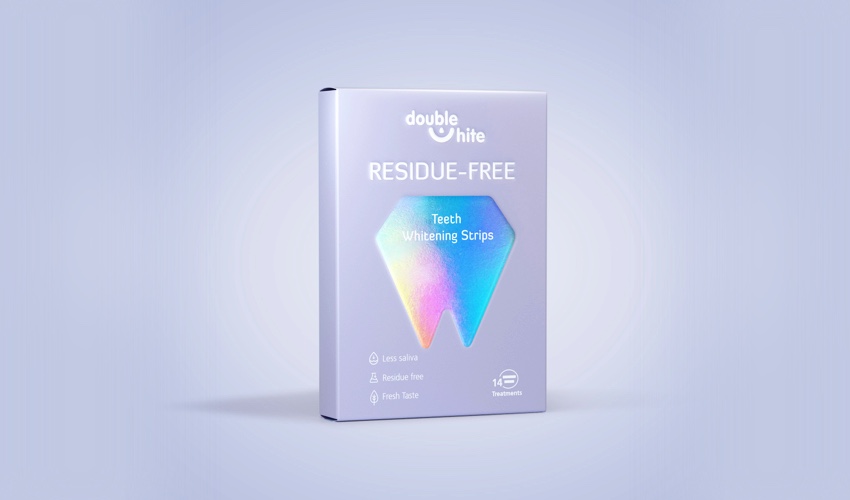
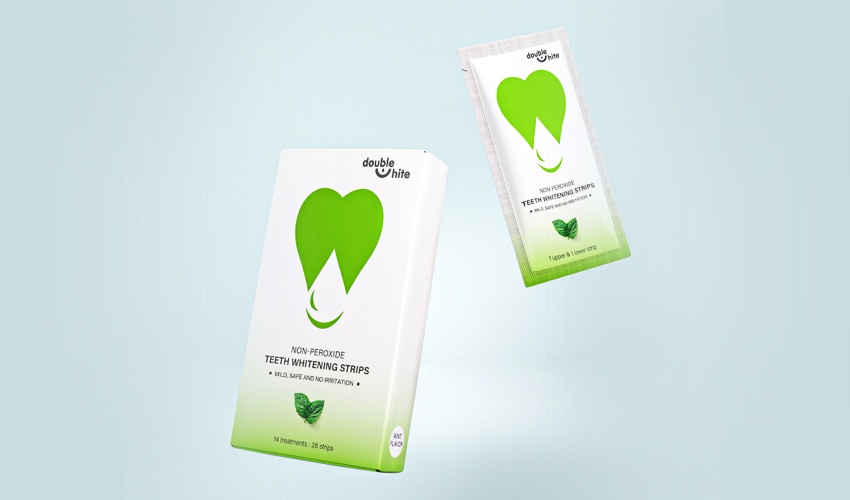
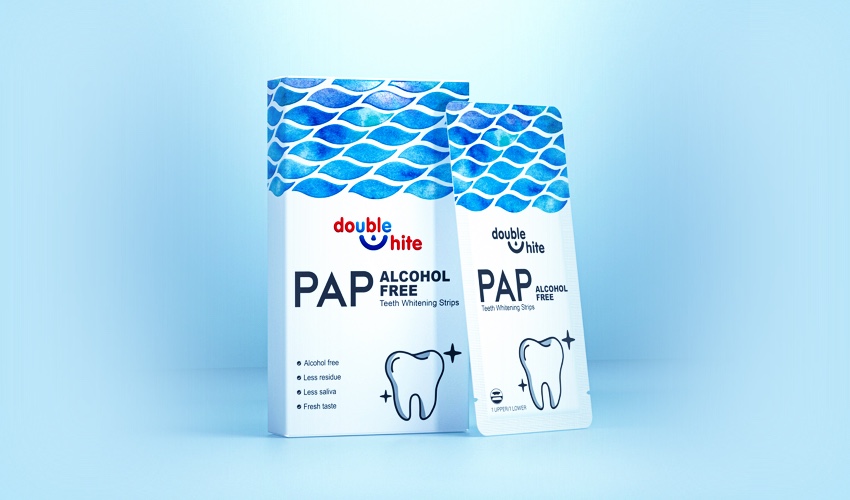
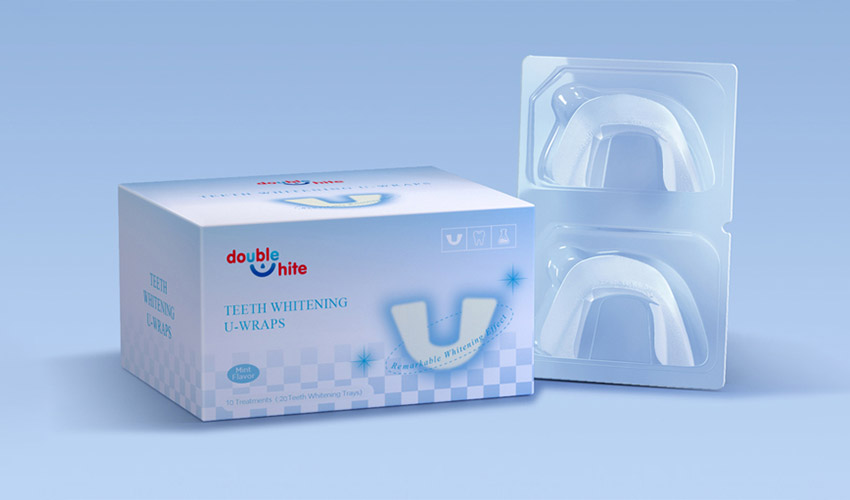
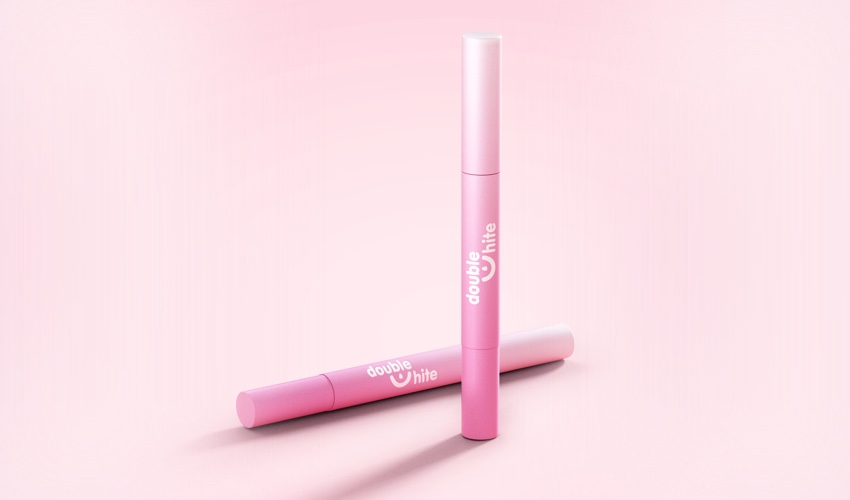
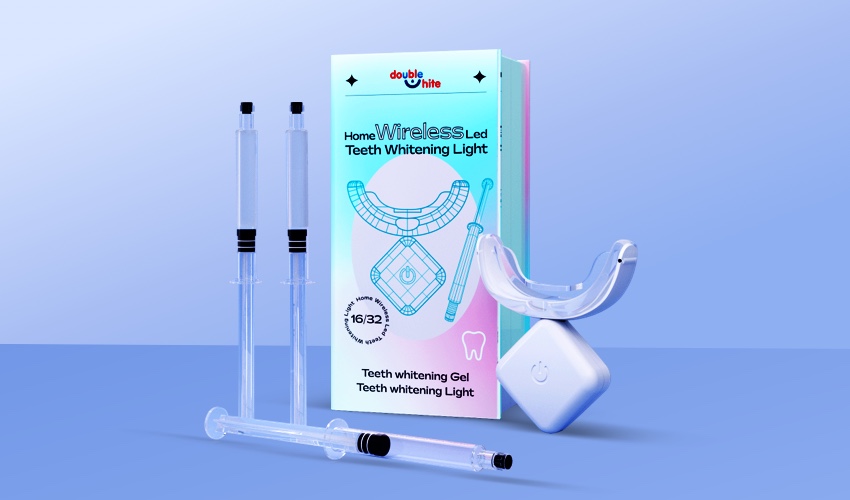
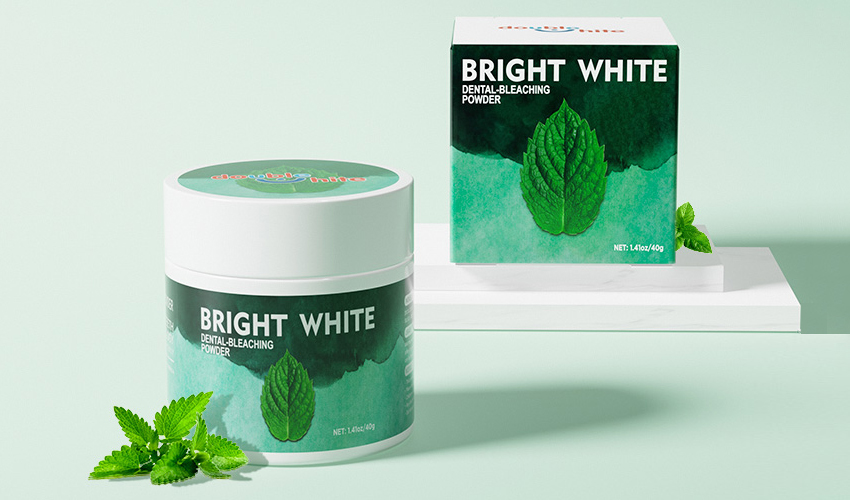






Whatsapp: +8615920313473
cndoublewhite
Doublewhite
doublewhitecn
cndoublewhite
cndoublewhite